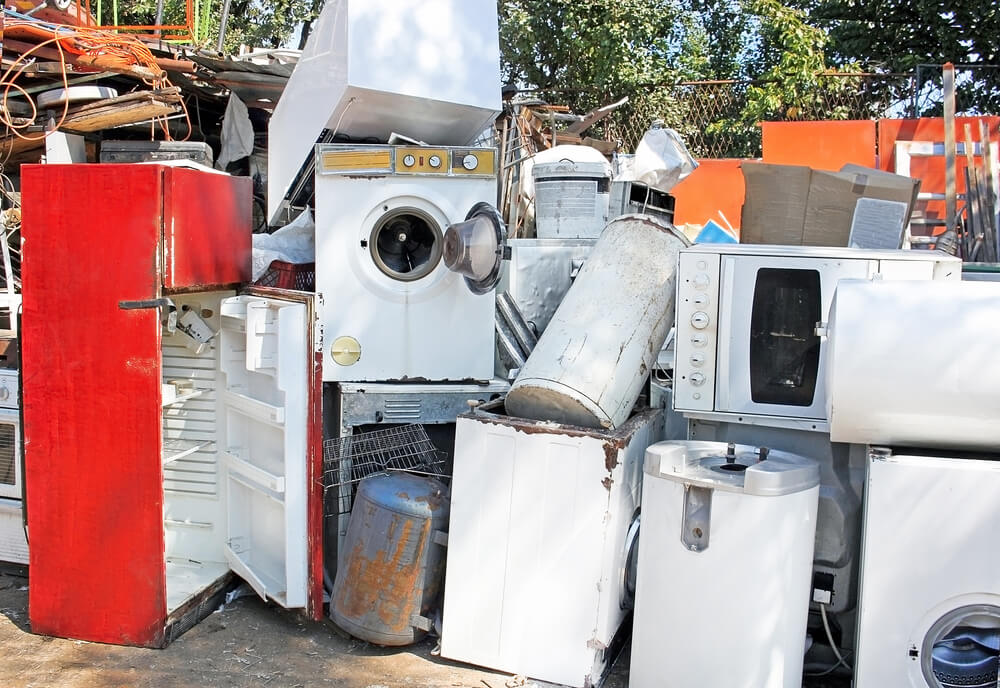Short Answer — You can expect scrap yards to pay you anywhere from around $3 to $17 for most large household appliances, based on the type of appliance you want to scrap and the current market conditions. Be aware, though, that individual recycling centers are not bound by these conditions, and prices can vary widely by location.
Scrap Appliance Prices Explained
Though scrap metal prices vary widely by location, you can expect to receive anywhere from about $3 to $17 when you scrap most common household appliances.
We contacted multiple scrap and recycling yards in California, Florida, Georgia, Minnesota, New Jersey, Pennsylvania, and Texas to determine how much money you can get when scrapping old appliances.
While prices for old home appliances vary significantly, ranging from between one cent and six cents per pound, most scrap yards offer prices around four to five cents per pound. The price is based on the total weight of any appliances you bring in.
You can expect your appliances to bring in approximately the following:
- Dishwasher (150 pounds to 175 pounds): $6 to $10
- Dryer (150 pounds to 200 pounds): $6 to $12
- Oven (77 pounds to 180 pounds): $3 to $10
- Radiator: See our related article on radiator scrap prices.
- Refrigerator (approximately 200 pounds): $8 to $12
- Washing Machine (200 pounds to 300 pounds): $8 to $17
- Water Heater: See our related article on average water heater scrap prices.
How to Scrap an Appliance
None of the recycling centers we contacted would pick up old appliances. Instead, you will need to load and drive them to your closest scrap metal recycling center.
Once there, the center will weigh your scrap. You may need to unload it first, or the center may weigh your vehicle before and after unloading to calculate your scrap total.
After completing the weighing, the center will pay you for your scrapped appliances.
To find a local recycling center, visit the iScrap App website.
Separating More Valuable Appliance Components
Old appliances are priced as though they are composed entirely of light iron (aka shred steel), according to the scrap centers we contacted. This is one of the cheapest kinds of metal.
You can get more money for your appliances if you disassemble them first and separate their composite parts. For example:
- Trustway Metal explains that removing the copper, brass, aluminum, and/or zinc components from a water heater can net you a much higher price.
- Removing a refrigerator compressor is often more profitable than scrapping a complete refrigerator.
- iScrap App shows how to salvage valuable metal from cast iron stoves.
Risks of Separating Appliance Components
Note that disassembling appliances takes time and specific knowledge of machinery. In the case of certain appliances, you can expose yourself to environmental hazards or risk legal actions if you don’t proceed carefully.
Old refrigerators and air conditioners, for example, carry additional risks. The EPA explains that both refrigerators and air conditioners contain Freon, a colorless gas that is used as a refrigerant and is known to be harmful to the environment.
Disposal of Freon by anyone who doesn’t have the proper certifications can result in tens of thousands of dollars in fines.
 William Lipovsky
William Lipovsky






